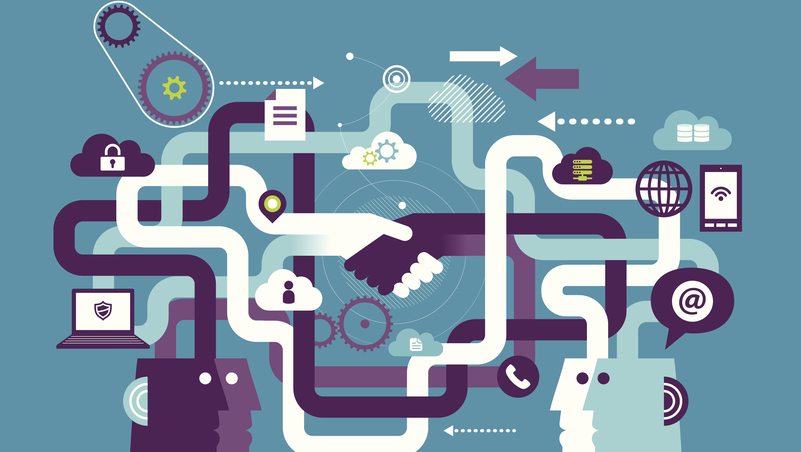Tom McClintock
Tom McClintock is chief operating officer at NSI Partners in Colorado Springs, Colorado.

We’ve known about the power of relationships to increase acquisition, retention, and branding since the dawn of marketing, but only lately has the technology to truly capitalize on it been developed. No longer having to trade away customization for scale, marketers can now have it all—and will be expected to.
Before the Industrial Revolution connected consumers with an ever-expanding array of goods, people tended to base their purchase decisions largely on personal referrals. Call it Relationship Marketing 1.0.
But consumer demand for lower prices and wider selection ushered in a new era, one where we marketed products and services not with relationships but by touting features and benefits. Sometimes called the product marketing era, it was less personal, but with industrialization and globalization on the rise, it provided a wider variety of products more cheaply than ever.
Then, “smart marketers began to question this approach,” according to Responsys President Scott Olrich. “Why … were we marketing to similarities? Why not differences?” Enter segmentation (personalized mail-order catalogs, for example) and the (re)birth of relationship marketing. "But mail-order segmentation was just the first step. Newer marketing tools, including databases linked with email, internet search, and social media, have refined niche markets into highly personalized groups, allowing marketers to develop individual, or 1:1 marketing campaigns.
Those same computer- and network-based tools have also given consumers the power to speak out about their likes, dislikes, and experiences. This two-way street has enabled us to reach Relationship Marketing 2.0. According to consultant Vignesh Subramanyan, that’s the point at which “personal recommendations are the primary driver of consumer purchase decisions at every stage of the purchase lifecycle, for the majority of product categories and industries.” Hence, we’ve now come full circle back to true relationship marketing for all organizations.
As organizations in the product marketing era grew, they needed robust infrastructures to work with their expanding customer bases. Given contemporary technology, institutionalizing the process was the only way to work with the large numbers involved. First, companies, followed later by nonprofits and government offices, developed and mailed form letters from customer service to address the majority of queries and complaints (plus the stray compliment).
Learning from these form-letter responses, organizations were soon able to predict with at least middling accuracy customer exchanges that could be codified into telephone scripts and dial prompts and, eventually, email templates. But responses lacked a personal touch and often sounded the same. Even though organizations were more responsive than ever, the responses were too generic to forge a strong connection. Consumers felt dehumanized, herded by impersonal voice prompts.
The need for high-tech tools that would enable much more personal interaction, even on an enormous scale, was clear, as were key expectations from tech-savvy customers:
So, how can we equip customer-service agents to be smarter, more improvisational, empowered, and empathic in their quest to provide satisfying experiences that develop meaningful relationships at scale?
The answer to smarter customer service is being found in bots and the Internet of Things (IoT). Any of these tools can equip agents with relationship-building information while freeing them up from more basic tasks.
Disney is one organization that has transformed not just its customer service, but also the user experience thanks to IoT. It invested approximately $1.5 billion into its MyMagic+ program featuring the MagicBand. This high-tech RFID bracelet serves as hotel key, credit card, and admission ticket, maximizing convenience for guests while freeing up employees to focus more on the guest experience and less on handling transactions. It even identifies band-wearers so Cinderella can greet them by name, and pre-ordered meals at Disney World’s Be Our Guest restaurant can be queued up by the kitchen and delivered right to the table they’ve selected moments after they arrive. It won’t be long before RFID bands will easily enable networking contacts at large association conferences to find each other, complete scavenger hunts in the exhibit hall, or follow a virtual conference track that highlights relevant sessions in proximity.
While IoT requires a greater investment, leading associations are already rolling out inexpensive chatbots to help boost member service and experience. Bots are cross-platform software programs that accomplish automated tasks using a verbal or text-based conversation interface. (Siri, Alexa, Google Home, and more than 100,000 chatbots on Facebook Messenger are all examples.)
According to Bill Bruce, CAE, executive director of the American College of Occupational and Environmental Medicine, bots can give members voice access to important information that was once buried in the AMS or many layers down on the website. While security experts are pondering the ramifications, members at the American Academy of Orthopaedic Surgeons, where Bruce previously worked as chief technology officer, are relying increasingly on an Alexa skill he and his team built that takes advantage of the AMS’s application programming interface access to answer the most persistent questions, often about dues and conference registrations. With these queries answered, AAOS staff members, like their Disney counterparts, are freed up for more complex relationship-building.
Speaking of relationships, other associations and nonprofits are considering using membership onboarding bots that reach out to new members on their one-month anniversary to identify specific interests, set goals, and help the members accomplish those goals before the renewal notice arrives.
Bots don’t have to be for members only, either. The American Heart Association built a different Alexa skill, one that educates the public about CPR steps as well as stroke and heart attack warning signs—a case of high-tech, high-touch customer service saving more than just someone’s time.